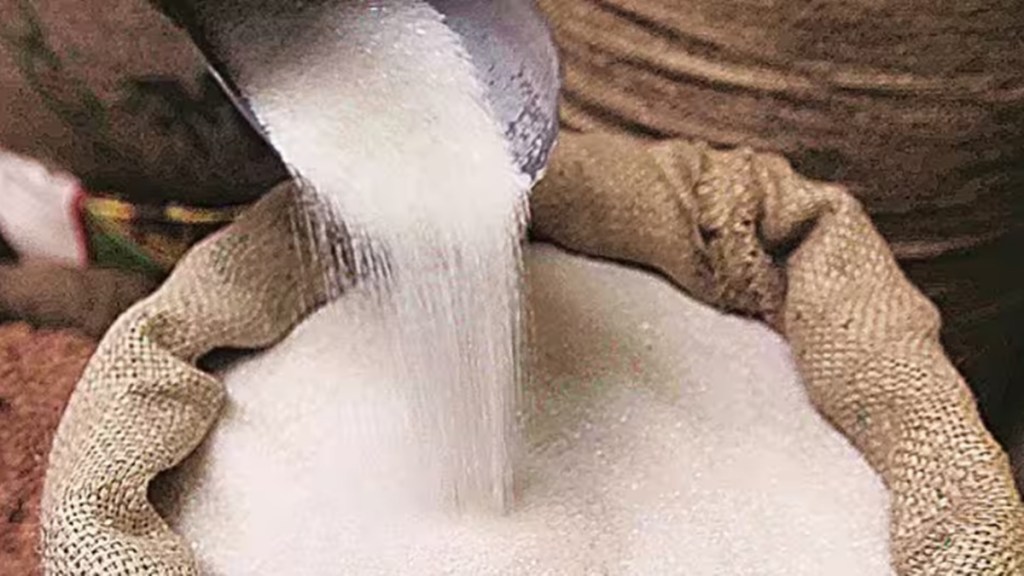The food ministry has recommended that sugar exports be put under the ‘restricted’ category beyond October 31, a move that signals a likely multi-year low in shipments of the sweetener, and a narrowing gap between domestic production and consumption.
A directorate general of foreign trade (DGFT) notification to this effect is expected shortly.
India exported 6 million tonne (MT) of sugar in the last sugar season (October-September 2022-23), and a record 11 MT in the year before, when no quota restriction was imposed.
A key reason for the estimate of the lack of surplus for exports in the just-started season (2023-24) is the sharp rise in blending of ethanol into petrol, which is set to reach 12% by December-end.
Of the estimated sugar production of 31 MT in the current year, 27 MT is expected to be required for domestic consumption as sweetener. That means after earmarking 4.5 MT for ethanol production, hardly any sugar will be available for exports. The government is keen to ensure that domestic sugar prices don’t spiral before the peak festive period.
Industry sources said the exports may even draw a blank this year, a scenario not seen in many years.
Following the review of prices and availability of essential commodities by the inter-ministerial committee on Friday, the food ministry suggested putting exports of all varieties of sugar –- raw, white, refined and organic exports under ‘restricted’ category until further order.
Sources said following the assessment of sugar production this month, the food ministry would review the domestic supply situation before taking a call granting export quota for 2023-24 sugar season (October-September).
Last year, the government announced to impose restrictions on sugar exports from June 1, 2022, which was later extended till October 31, 2023.
According to trade estimates, mainly because of fall in key producing states of Maharashtra and Karnataka, the sugar production in 2023-24 season is likely to decline to around 31 MT from 33 MT in 2022-23.
“There would be sufficient supply of sugar for domestic consumption as well as for ethanol,” a food ministry official said.
According to the Indian Sugar Mills Association, around 11.4% blending of ethanol with petrol has been achieved so far. The government is aiming to achieve 20% ethanol blending with petrol by 2025-26.
As on September 30, overall sugarcane acreage for the kharif season stood at 5.9 million hectare (MH), 7.6% higher than the previous year. The agriculture ministry is expected to release the first advance estimate of sugarcane production for 2023-24 crop year (July-June) next week.
According to the department of consumer affairs, modal retail prices of sugar rose by close to 5% at Rs 44/kg on Saturday from Rs 42/kg a month back. Earlier this year, modal retail sugar prices were Rs 40/kg.
Retail inflation for sugar and confectionary category rose by 4.52% in September from 3.57% in July, 2023 on year. Sugar has a combined weightage of 1.13% in the consumer price index (CPI).
Indonesia, Bangladesh, United Arab Emirates and Djibouti have a major share in the total sugar exports.
Consulting firm Crisil in its report in July had stated that higher domestic sugar prices and increasing sales of ethanol will help offset the rise in sugarcane cost and lower exports in fiscal 2024, leading to stable operating profitability for integrated sugar mills, or those with sugar, distillery and power cogeneration facilities.

